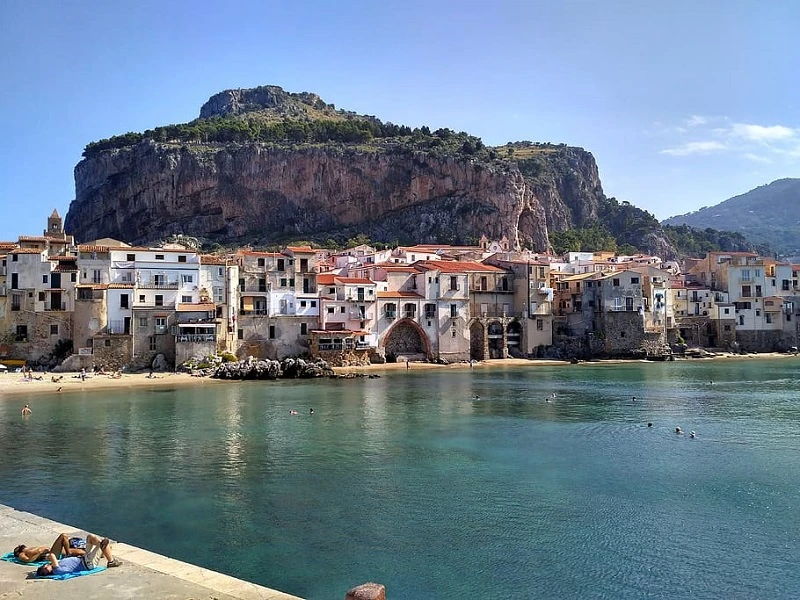
Welcome to our comprehensive guide on the best time to visit Sicily! The largest island in the Mediterranean Sea, Sicily has long drawn people and tourists alike. The island, which is divided from Italy’s mainland by the Strait of Messina, is peppered with beautiful beaches, old stone cities, and historical ruins.
As early as 12,000 BC, humans began to inhabit this triangle of land, and the island later witnessed the emergence of the legendary Phoenician and Ancient Greek civilizations. The island’s rich and distinctive culture was influenced by the Byzantines, Vandals, Ostrogoths, Normans, and Arab conquerors who later governed it.
The terms from the languages of the peoples that colonized the island, such as Arabic, Greek, and Spanish, are still present in the Sicilian dialect.
Sicily experiences typical Mediterranean weather, with warm, sunny summers and mild, rainy winters. Visitors swarm to Sicily in the picture-perfect spring and summer to go swimming, surfing and sightseeing, but the autumn and winter are the best times to take in the island’s cuisine, architecture and culture.
Despite the pleasant temperatures, Mount Etna, Sicily’s famous volcano, is usually covered in snow from October through May.
Best Time for Sightseeing
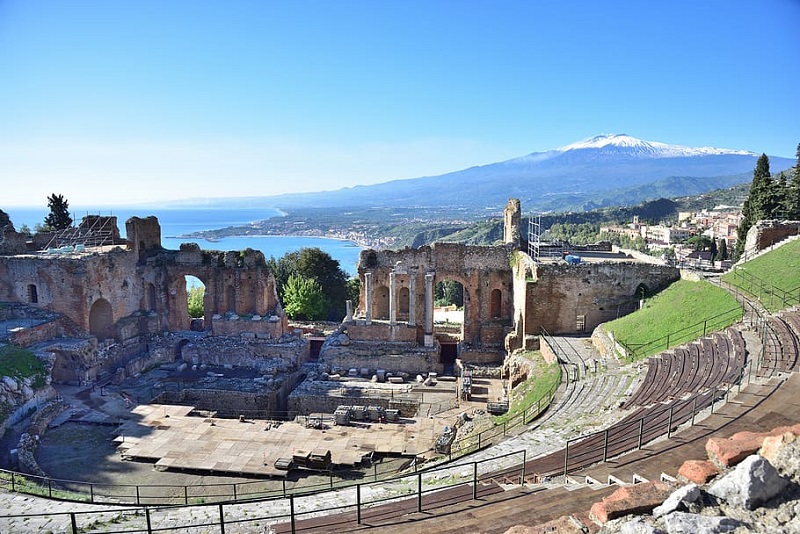
In Sicily, April through mid-June or mid-September through October are the finest times to go sightseeing. The sun will be out but it won’t likely be unbearably hot during these times, and there won’t be as many tourists as there would be in July and August, which are the busiest months of the summer.
Visit in the spring if you want to avoid the rain. Every first Sunday of the month throughout the year, all state-run museums, galleries, parks, gardens, and ruins provide free admission regardless of when you plan to visit.
Best Time to Visit Sicily Beaches
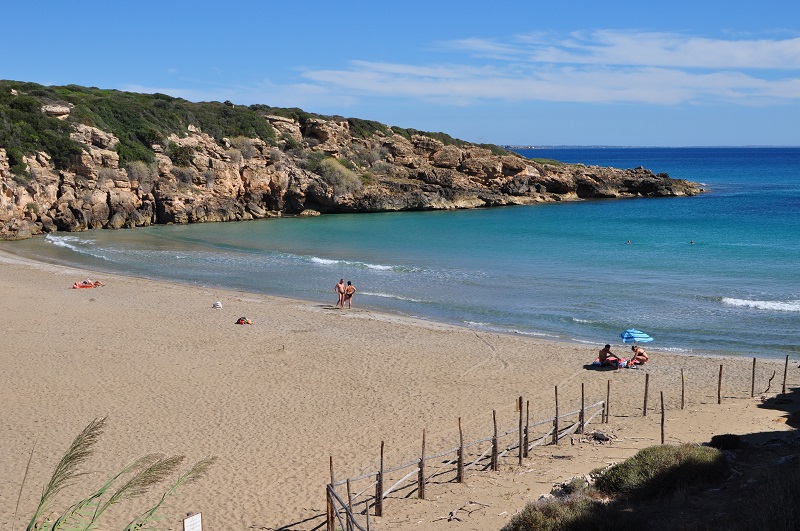
June marks the start of Sicily’s official beach season and is also when the majority of visitors arrive. If you want to enjoy the water without the crowds, come in May since it’s typically warm enough for swimming, especially in the second half of the month.
The sea won’t have cooled much by September and frequently October, but many tourists will have left by then.
Best Time to Visit Mount Etna
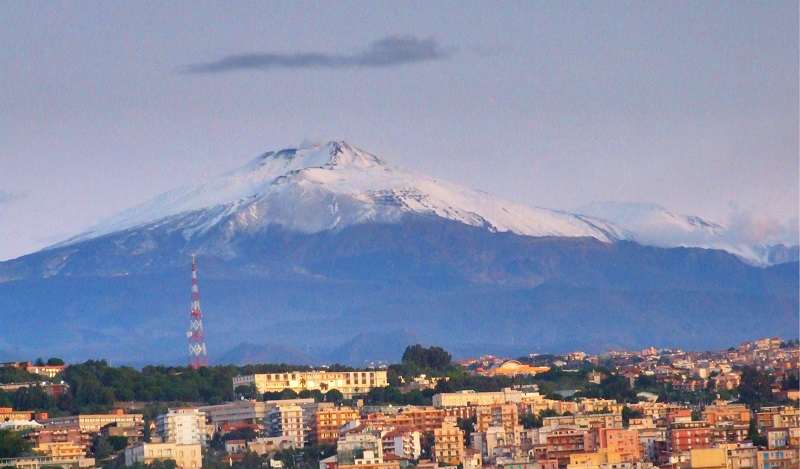
The best times to visit Mount Etna are in May or late September and early October when temperatures are comfortably mild and crowds are at a minimum. Mount Etna may be visited and ascended all year round.
However, the time of day you intend to arrive is more crucial. As clouds tend to form later in the day, getting there early in the morning not only guarantees a more peaceful experience but also greater vistas.
Best Time For Day Trips to the Aegadian Islands
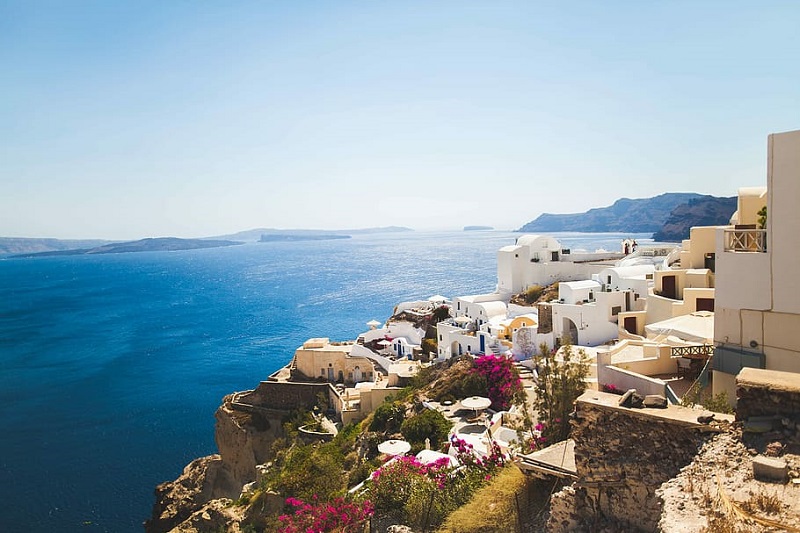
Just a few miles off the coast of Sicily, the Aegadian Islands offer stunning beaches and the chance to experience a slower pace of life. Although the water will still be warm in September, the summer months of June through August are the finest for visiting the beaches on Aegadian Island.
The second half of September, April, and May are better times to go hiking because the summer months can get too hot. Despite the warm weather in October, it can still be windy and rainy.
Sicily Travel Seasons
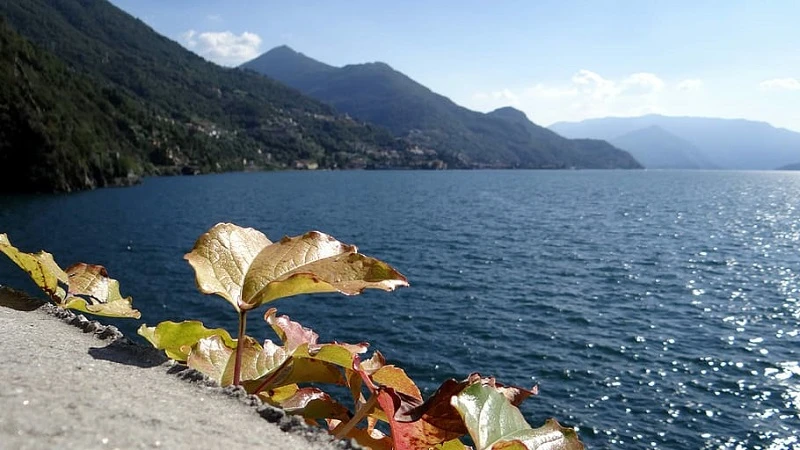
High Season (June through August, Easter week, and mid-December to early January):
Sicily’s high season typically runs from June through August, but it also peaks around Easter week and the Christmas holidays, which run from roughly mid-December to Epiphany on January 6.
Expect heavy crowds, as well as the highest airfares and hotel rates of the year, during these times. Summertime brings with it sweltering heat, which may necessitate staying inside during the warmest hours of the day.
Shoulder Season (April and May, excluding Easter; September and October):
During this time, you can travel to Sicily without having to deal with throngs of tourists, while still taking advantage of the generally pleasant weather and occasionally lower airfare and hotel prices.
Low Season (November through March):
Late autumn and early winter are Sicily’s low seasons, except for the Christmas and Epiphany vacations. Although it could be chilly and occasionally rainy, this time of year offers a more genuine experience because hotels and restaurants can often offer better service with fewer customers.
You’ll likely find lesser airfare and discounted hotel costs. The beach won’t allow swimming, but the wintertime temperatures, which hover around 10°C on average, allow you to please take in the sights by dressing appropriately.
Best Time To Visit Sicily Month By Month
January
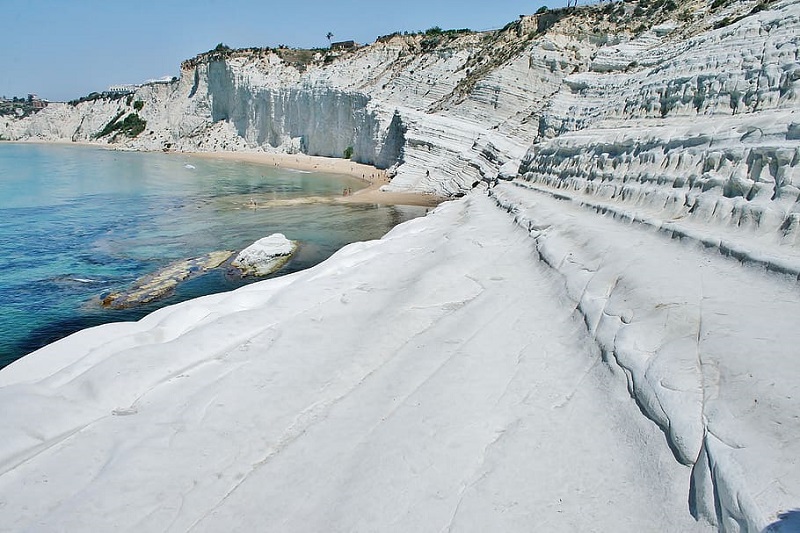
Sicily experiences winter in January, and while it can be rainy and chilly there, it’s rather mild compared to other places in colder regions. The island’s typical high temperature is 12°C, although the lows can get rather frigid at 5°C at night.
You should plan for colder weather and carry a warm waterproof jacket because some mornings may be quite brisk this month, with an average of 66mm of precipitation falling over 18 days.
However, since there won’t be many people there, it can be worthwhile to bundle up so you can meander around empty streets and visit island attractions in peace. January can be an ideal month for sightseeing if you don’t mind the cold.
February
The average high temperature stays at 12°C and the average low temperature stays at 5°C during this month, except for a drop in precipitation down to 40mm.
Nowadays, there are typically a few more bright days than cloudy ones, so it’s a good idea to carry layers of clothing, such as a variety of long- and short-sleeve shirts as well as a warm jacket.
In early January, there are roughly 9 hours of daylight, but by late February, the sun rises at 6:37 in the morning and doesn’t set until almost 6 in the evening. (Maximum Average Temperature: 12 °C. 40mm of precipitation on average.)
March
Even if the weather is getting warmer, March can still be chilly, especially at the beginning of the month. However, as the month goes on, the afternoon high temperature will frequently reach 16°.
While there are some warmer and some cooler days during this time of year in Sicily, there is little rain, with an average of just 34mm over 18 days. March might be a great month to see the attractions without the crowds, as long as you don’t have your heart set on enjoying the beaches with sea temps only around 15°C.
Simply pack a variety of clothes, and you’ll be ready for whatever comes your way. (Maximum Average Temperature: 16 °C. 34 mm of precipitation on average.
April
With spring finally coming, April is sunnier, warmer, and drier. With daytime highs currently around 18°C, you’ll need your sunglasses and lighter clothes, but early mornings and evenings are going to be very chilly with the low at a brisk 8°C.
You probably won’t go swimming unless your lodging has a heated pool because the sea is still very chilly, just warming up by one degree to 16°C. Bringing a variety of clothes, including a jumper or jacket, is still an excellent idea right now.
There may be a drizzle or rain, but it normally won’t interfere with outdoor plans. (Maximum Average Temperature: 18 °C. 35mm of precipitation on average).
May
The month of May is ideal for travel to Sicily, with nice summer-like temperatures that are not oppressively hot. You’ll just miss the busiest times of year for tourists because the average high temperature is 21°C and this is one of the driest months of the year with only 22mm of precipitation over five days.
Focus on packing loose, lightweight clothing that will keep you cool, a hat with a broad brim, and lots of sunscreens.
Even though the sea is still 19°C, you might want to take a quick dip now and then, so don’t forget your swimming suit. A sweatshirt or jumper is also a smart idea to pack because the low at night is still chilly at 12°C.
June
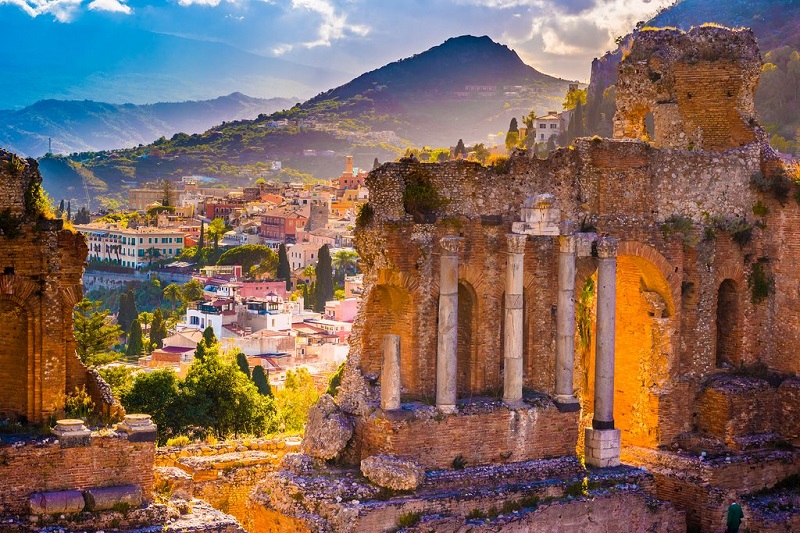
It may not be as hot as July and August, but you can still expect plenty of sunshine and clear, blue skies in June. The temperature has increased four degrees to an average high of 25°C. The sea is now up to 22°C, making it the optimum temperature for swimming and cooling off from the heat.
The island’s interior tends to be cooler, so this month is still an excellent time to visit the inner sights. If you intend to be out late at night, you may still need a jumper because the nighttime lows will be 15°C.
July
Sicily experiences a hot, sunny, and crowded July with long waits at attractions and large crowds at the beach. There is hardly any rain, with the average amount falling at just 2mm. Bring plenty of sunscreens; you may want to stay inside or in the shade during the warmest part of the day right now.
Considering that not all hotels and other accommodations have air conditioning and that even the nights can be warm, be sure to reserve an air-conditioned room for a more restful night’s sleep.
August
Even hotter than last month, especially on days with significant humidity, afternoon temperatures are reaching 30°C or higher. The beaches are typically as congested as they will be all year due to the residents taking this month off to spend their holidays.
The sea temperature is a particularly lovely 27°C right now, so you might like to have a morning dip at the beach before scheduling the hottest parts of the day inside cool art galleries and museums.
Even if there is a modest rise in precipitation, the average amount is still only 15mm, so you won’t likely experience rainy weather.
September
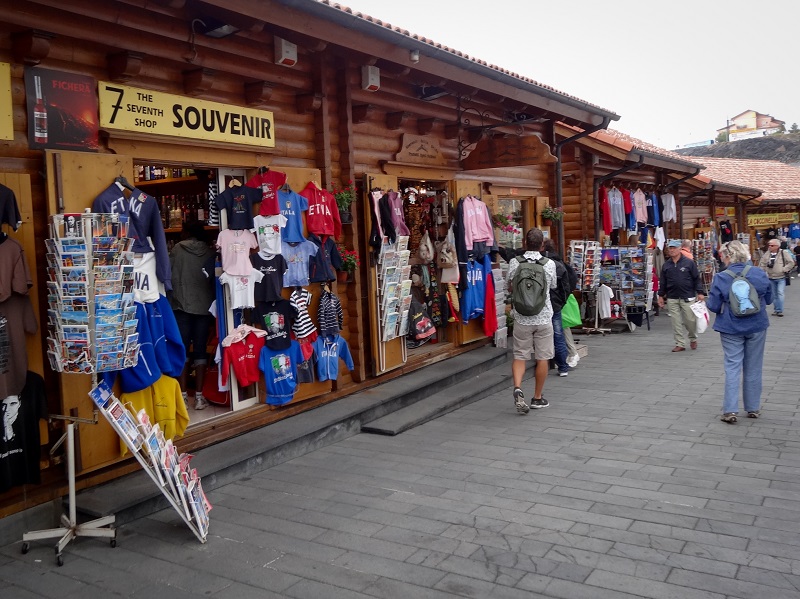
While early September will remain scorching, it will progressively cool, with the average high temperature lowering three degrees to 27° this month.
Although there is a slight increase in the likelihood of rain with 37mm over five days, it is still not enough to cause alarm, and the sea will remain delightfully pleasant at 25°C.
Come in the second half of the year, when the weather is likely to be favorable and the largest crowds will have dissipated. Bring your summer clothes, including a swimsuit, and if you get chilly easily in the mornings or at night, a jumper.
October
Even though autumn has officially arrived, October still features warm summer-like temperatures. With afternoon highs around 22°C and a sea temperature of roughly 23°C, the weather is frequently picture-perfect right now.
With the average precipitation now at 84mm over eight days, if you visit this month, especially in the second half, you’re more likely to witness some wind and rain. Bring warm and cool weather attire, as well as a waterproof jacket, right away.
November
Even though the weather in November is substantially cooler, it is still only pleasant. The island’s hilly parts assist to block breezes from blowing in, which helps to keep temperatures bearable as the mercury rises to 17°C in the afternoon.
Despite the comparatively moderate temperatures on land and the sea’s current temperature of 21°C, swimming is probably not a good idea right now.
There is a good possibility of rain, although at 76mm over 11 days, the amount is a little less than last month. Plan to bring layers of clothing and a jacket or jumper as well.
December
Now that winter has arrived, the temperature has significantly decreased, averaging 10°C but occasionally rising to 13°C in the afternoon light. Even though it’s one of the coldest months of the year, it may still be a fantastic time for sightseeing or even mountain hiking.
Although you won’t need warm weather attire right now, you should still pack a range of layer-able clothes and a raincoat because there will certainly be rain, with an average of 79mm of precipitation over 17 days.
Conclusion
As you can see from reading this post, there are a lot of factors to take into account before choosing the ideal time for you to visit Sicily.
Overall, June and July are the best time to visit Sicily since you can engage in nearly all of the country’s attractions while also taking advantage of the region’s exceptional weather and stunning beaches.
But you might choose something different based on your ideal holiday objectives, spending limit, and quantity of spare time.
Winter can be less expensive and congested, especially if you want to go skiing, and spring and autumn are great for hiking and scenery. No matter what you choose, be sure to savor the fascinating history and culture of this wonderful Italian island.
